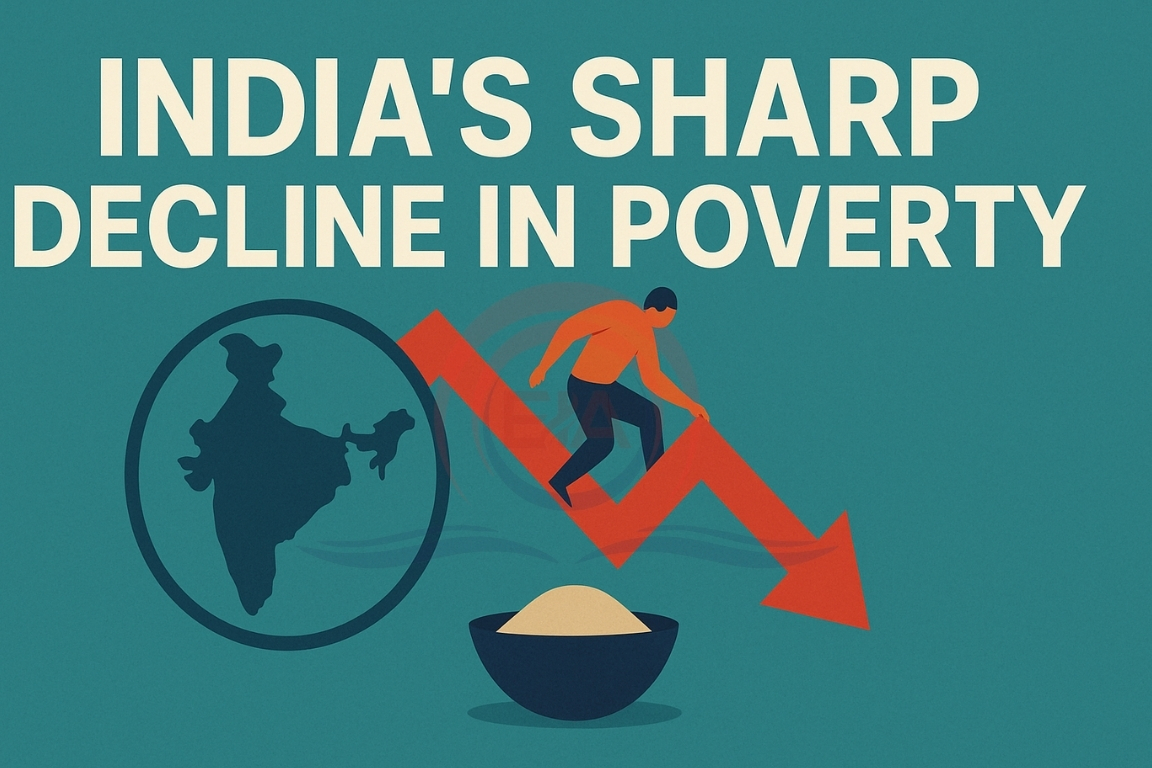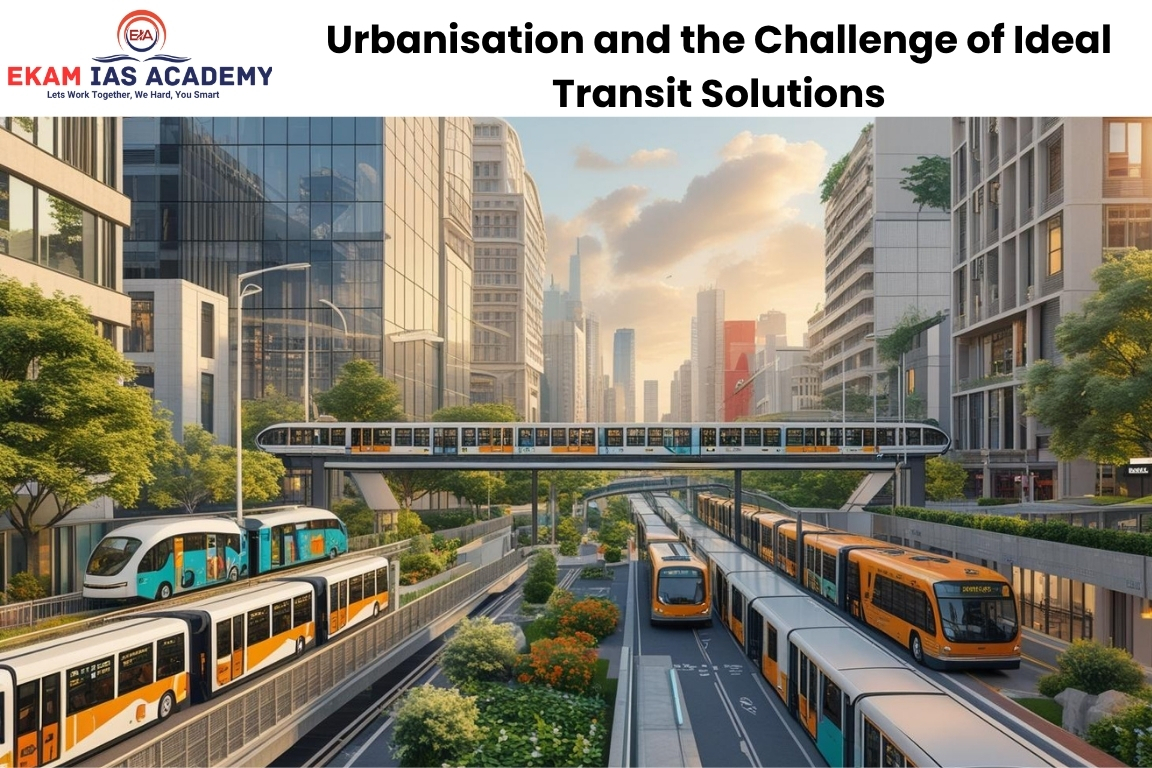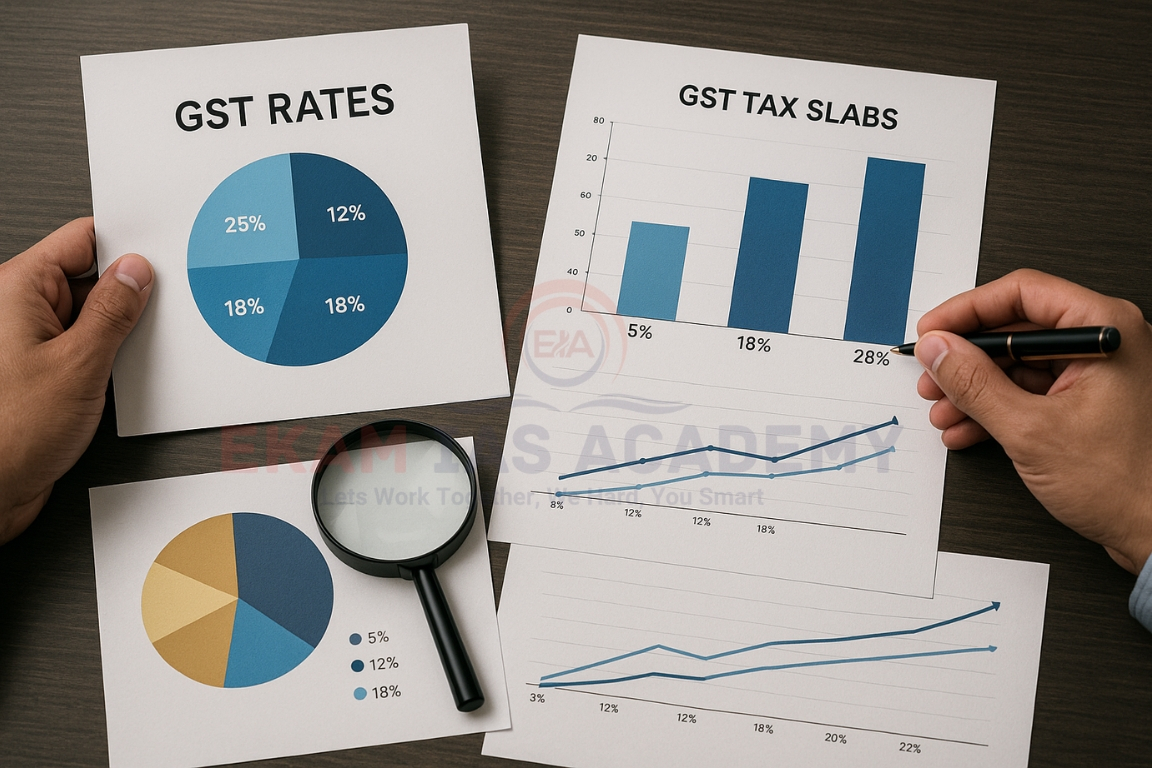The World Bank recently stated that only 5.75% of Indians live in abject poverty as per its updated poverty threshold, showing a sharp decline from 2011 levels.
World Bank’s Findings Decline in Poverty Rate
- As per the World Bank’s $2.15/day poverty line (PPP terms), India’s abject poverty dropped from 12.2% in 2011 to 5.75% in 2022–23.
- This equates to roughly 77 million people below this threshold, showing significant progress over the past decade.
Change in Estimation Approach
- Earlier poverty lines used lower benchmarks like the Tendulkar method or national consumption surveys.
- Now, the World Bank uses international poverty lines based on purchasing power parity (PPP), making comparisons across countries more uniform.
- For India, the PPP conversion factor means $2.15 translates to about ₹46/day in 2022–23.

Past Poverty Trends
- In 1977–78, over 64% of Indians lived in poverty (by Tendulkar’s estimates).
- In 2011–12, Tendulkar’s method showed 21.9% poor, while World Bank’s international thresholds reported higher estimates (52.5% using $2.15/day and 12.2% using $1.9/day).
How is Poverty Measured?
World Bank’s Method
- Uses international poverty lines based on minimum required income to afford basic needs.
- Adjusts the figure for each country using PPP exchange rates to ensure comparability.
Misconceptions
- The poverty line is not a direct currency conversion from USD to INR.
- For instance, $2.15 ≠ ₹179 (at market exchange rate), but ≈ ₹46 (in PPP terms).
India’s Domestic Poverty Lines
- India’s earlier Tendulkar Committee recommended: ₹17/day for rural and ₹23/day for urban (2004–05 data).
- Later revisions (Rangarajan Committee, 2014) proposed: ₹32/day in rural areas and ₹47/day in urban areas, but these were not implemented officially.
Why This Matters?
- Shows reduction in extreme poverty even with growing population.
- Highlights data challenges, India has not released post-2011 household consumption surveys for poverty estimation.
- Reflects the need for updated domestic poverty metrics aligned with current realities.
Way Forward
- Release latest consumption and income data for accurate poverty tracking.
- Adopt nationally relevant poverty lines while aligning with global standards.
- Strengthen social safety nets and improve delivery in underserved regions.
Conclusion:
India’s significant decline in extreme poverty reflects improved economic conditions and targeted welfare policies. However, continuous monitoring, updated poverty assessments, and inclusive growth are essential to sustain this progress.





